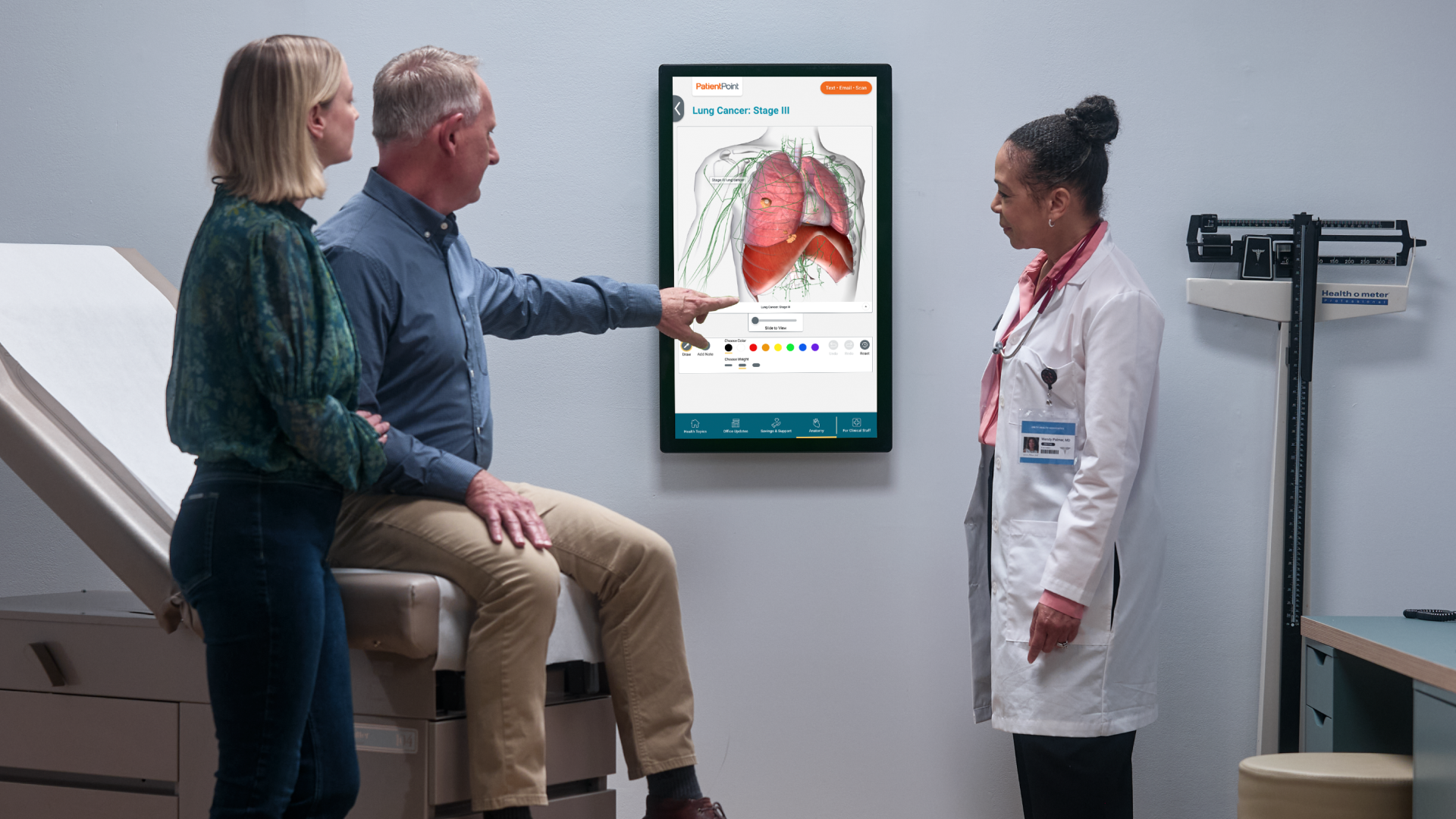Imagine an exam room where patients actively participate in their health journey and ask questions about their condition and treatment—a room where complex medical concepts come alive through vibrant visuals and relevant health education. With exam room devices, you can create those experiences for your patients and your care team. Here are three ways exam room devices will help improve the patient experience, increase adherence and empower patients to take charge of their health.
- Improve doctor-patient conversations
Incorporating exam room devices during the visit improves doctor-patient conversations by giving patients easy-to-understand health education and doctors visual teaching tools that break down complex medical information.
While the patient waits for their doctor, they can explore health topics that are relevant to them and the stage in their health journey. Information should be accessible to all levels of health literacy and include different media types to give patients the choice to ‘read, watch or explore.’ Your devices should also give patients easy access to the patient portal and practice resources, including your website, doctor bios or service information. On some exam room devices, patients can scan QR codes to get health education on their mobile devices, which they can view at home. PatientPoint exam room devices also include ‘Questions to Ask Your Doctor’ in many of the health topics. These questions prompt patients to speak up during their appointments and help improve the effectiveness of the conversations.
Once the appointment begins, doctors can use the exam room device to visually demonstrate to patients how their condition will progress using medically accurate 3D anatomicals, interactive models and medical illustrations. Exam room devices can also include procedure videos, whiteboards and other tools that doctors can use to explain health information in a way that patients can easily understand. These tools are useful in helping patients feel empowered to speak up, ask questions and take charge of their health.
- Increase treatment adherence
Demonstrating a condition’s underlying pathology and visualizing its progression motivates patients to prioritize the agreed-upon treatment plan. Patients who understand what will happen if they do not adhere to their medications or care plan are far more likely to stick to the doctor’s orders. To reinforce the care plan and give patients additional information, share relevant health education with easy-to-scan QR codes that will give them access to information while they’re at home. This information can also be shared from the exam room device with caregivers and family members who are important to the patient’s care journey and health.
After the visit, share automated reminders and educational materials with patients, reinforcing their understanding and commitment to their treatment plan. Incorporating exam room devices is a small adjustment that can make a significant impact on countless patient outcomes.
- Improve overall outcomes
When patients actively engage in their care journey, they gain a more profound sense of ownership over their health, leading to more proactive behavior and better long-term outcomes. They ask better questions, make informed decisions and follow through on your recommendations. This empowered participation leads to improved outcomes for the patient and the provider. Patients will adhere to treatment, resulting in improved conditions and reduced ED and acute care visits. This results in meeting value-based care initiatives, optimizing reimbursement and reducing overall healthcare costs.
Improving doctor-patient relationships by including exam room devices at your practice means more than just a technological upgrade; it represents a shift in the level of care providers can offer. By boosting patient understanding, promoting better medication adherence and enhancing overall outcomes, exam room devices empower patients and equip providers with the tools to collaborate effectively and achieve positive health outcomes. This simple but powerful shift paves the way for a future where informed decisions and active participation improve health outcomes for all.
Interested in incorporating exam room devices at your practice? Learn how PatientPoint can help your practice achieve this goal.

